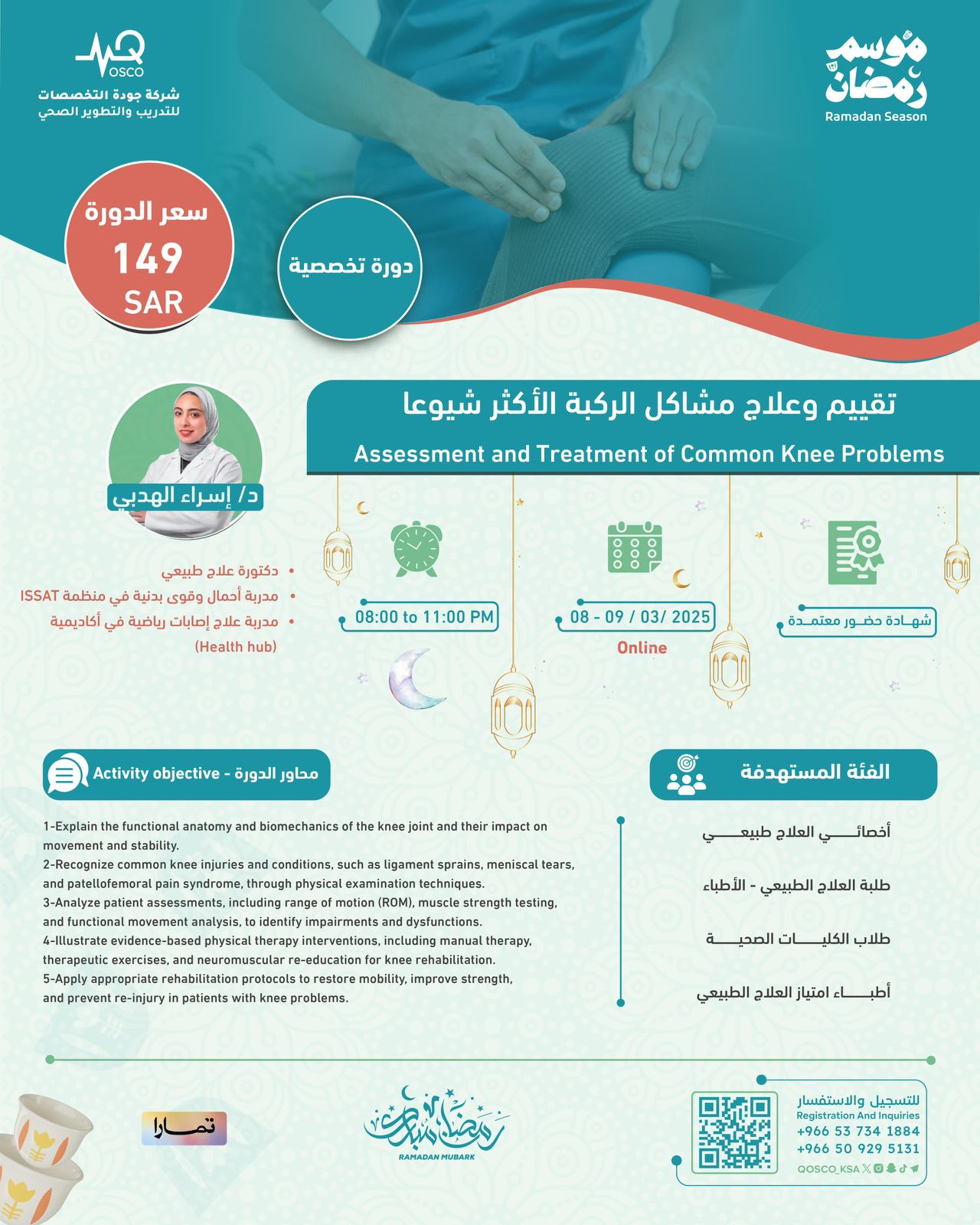تقييم وعلاج مشاكل الركبة الأكثر شيوعا - 3️⃣

تفاصيل الدورة
-
ما سوف تتعلم فى هذه الدورة
1-Explain the functional anatomy and biomechanics of the knee joint and their impact on movement and stability.
2-Recognize common knee injuries and conditions, such as ligament sprains, meniscal tears, and patellofemoral pain syndrome, through physical examination techniques.
3-Analyze patient assessments, including range of motion (ROM), muscle strength testing, and functional movement analysis, to identify impairments and dysfunctions.
4-Illustrate evidence-based physical therapy interventions, including manual therapy, therapeutic exercises, and neuromuscular re-education for knee rehabilitation.
5-Apply appropriate rehabilitation protocols to restore mobility, improve strength, and prevent re-injury in patients with knee problems.
عن الدورة
- التصنيف دورات أونلاين ( تخصصية ) معتمدة من شركة جودة التخصصات بشهادة حضور
- السعر 149 ريال سعودى
- اللغة العربية - الانجليزية
- المدة2 ايام
- شهادة اتمام الدورة